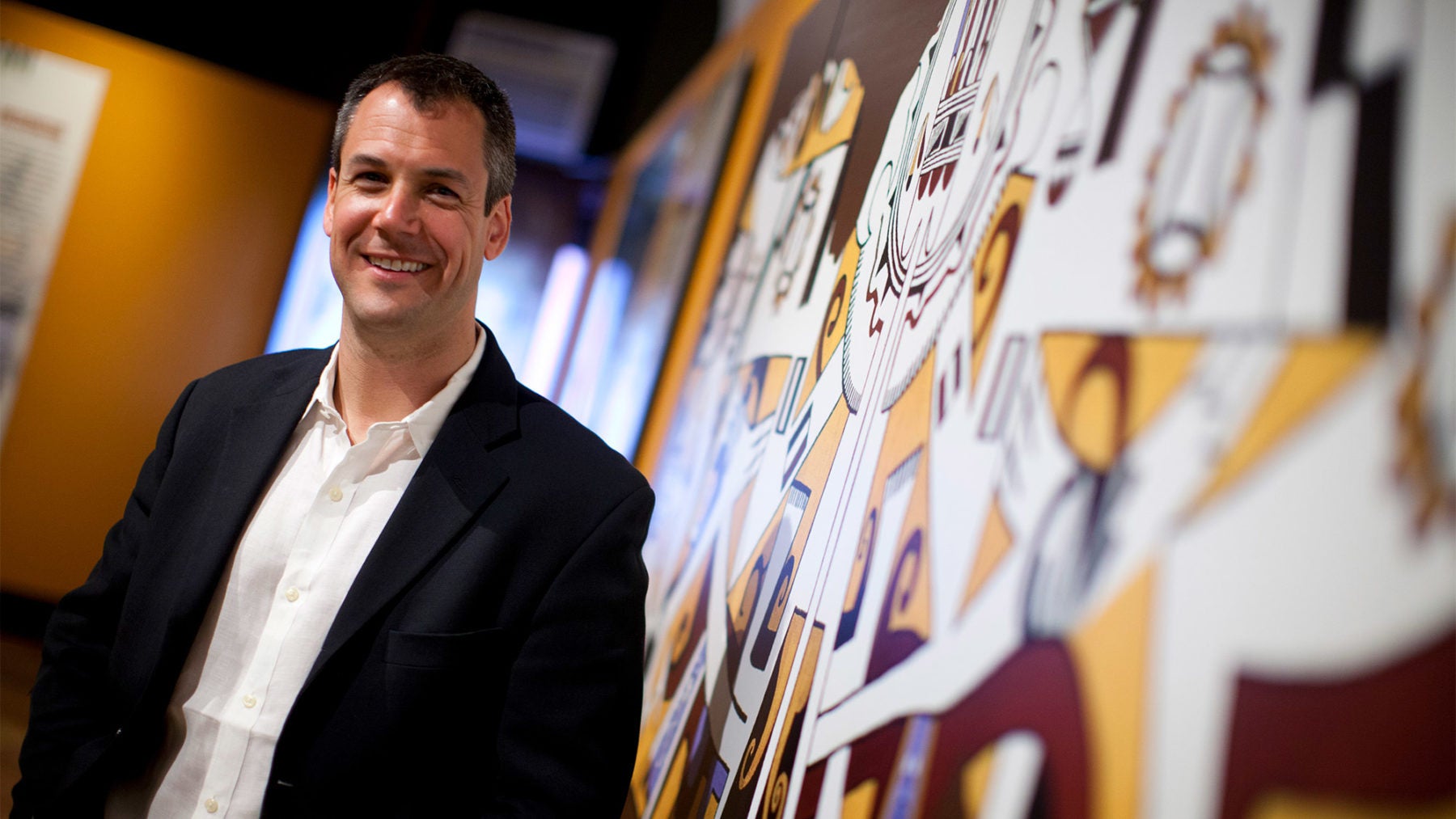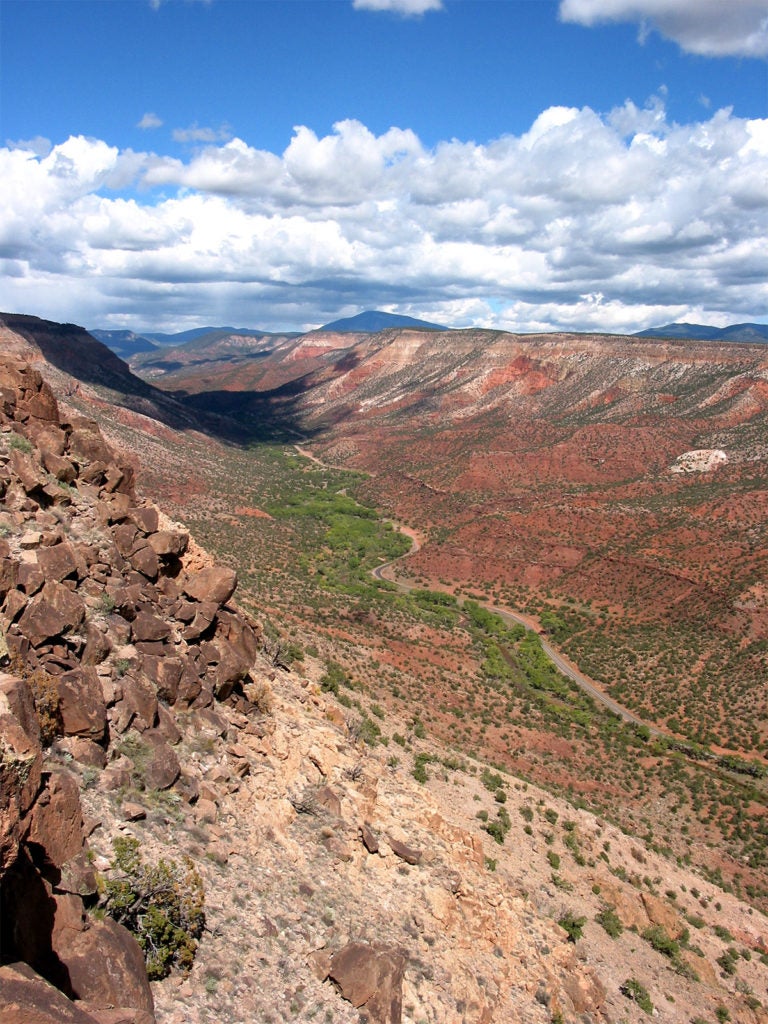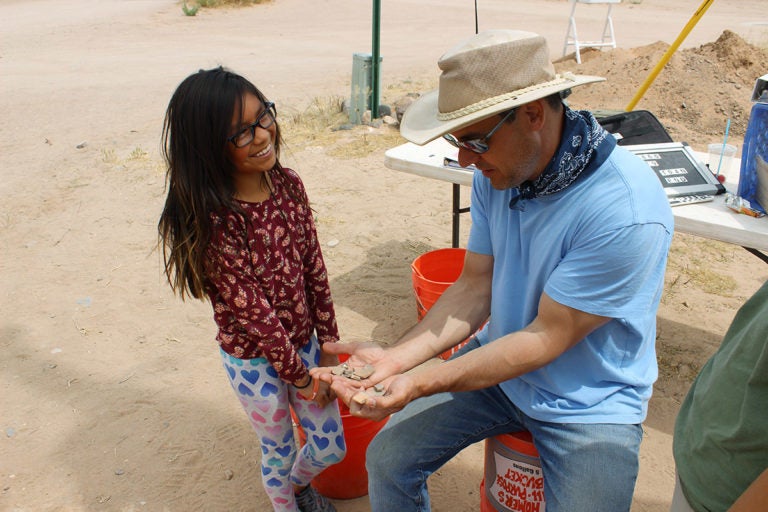
Stephanie Mitchell/Harvard Staff Photographer
Unearthing buried history
“It’s like a book that’s sitting out there and weathering over time. We want to read as much of that book as we can before the ink starts running, the pages get ripped out, and it gets lost.”
Ask Matt Liebmann about the best parts of his work, and he’ll tell you two things.
First, he’ll talk about the sheer beauty of where it happens: New Mexico, with its skyscraping mountains, hidden caves, and waterfalls cutting through the dry heat, all surrounded by an ocean of orange earth and sand.
Then, there are his partners, the people of the Jemez, an indigenous American tribe that has lived on this land in the north-central part of the state for more than 800 years, their rich history and oral tradition wedded to the terrain itself.
That history, though, is one that has been distinctly colored — and oftentimes buried — after Europeans arrived and wrote their own stories, with themselves at the center. As an archaeologist, Liebmann has spent the past 20 years doing research alongside the people of Jemez Pueblo, giving fresh life to the details of tribal stories through digs around their native territory.
“We’re trying to get the view from the indigenous side — how native people experienced the same tumultuous period,” he said, speaking about the work.
Liebmann began his relationship with the tribe as a graduate student, and since then has gained a deep understanding of why the history needs to be revisited and the sites shown the respect they deserve, especially given the difficult history between archaeologists and native peoples.


Liebmann examines 17th-century pottery discovered by Analynn Toya, 7, at Jemez Pueblo, N.M.
Photos courtesy of Matthew Liebmann
“It’s important to have tribal members be part of every stage of the research process: from the planning and the research to deciding what the appropriate methodologies to use are, and especially when we talk about how we’re going to interpret what we found in the field,” he said.
That last part is key, Liebmann said, because the geography itself serves as a record of the past.
“For people in the Pueblo, what they see when they look over that landscape is not just mesas with stunning vistas, but they see their history in the landscape,” he said. “They have a story about when their ancestors used to live on that mesa there, what ceremony is performed in that cave, and the waterfall over there. They’re seeing a multilayered landscape that is imbued with so much more significance than what I see.”
Besides its historical value, Liebmann and the tribe understand their research has real-world repercussions. Indigenous tribes, including Jemez Pueblo, have found themselves fighting for resources and rights at the local, state, and federal levels. So the findings can play a role in official discussions.
“It’s about sovereignty,” Liebmann said. “It’s about teaching people to understand that the land was stolen, and archaeology is a tool to document the indigenous footprint in that territory.”
Liebmann also hopes this work can help shape the future of archaeology, and give researchers across the country a chance to make amends for their scarred relationships with tribes by ensuring that native people are fully involved in the process. He makes an intentional effort to shape such a future every summer in New Mexico, as he forges ahead with his inclusive style of work.
“My goal is to be someone who helps to build bridges between indigenous communities and archaeology,” he said, “and to repair and rectify some of the injustices that have been conducted in the past that native people have had to endure in the name of archaeological research.”
This story is part of the To Serve Better series, exploring connections between Harvard and neighborhoods across the United States.




